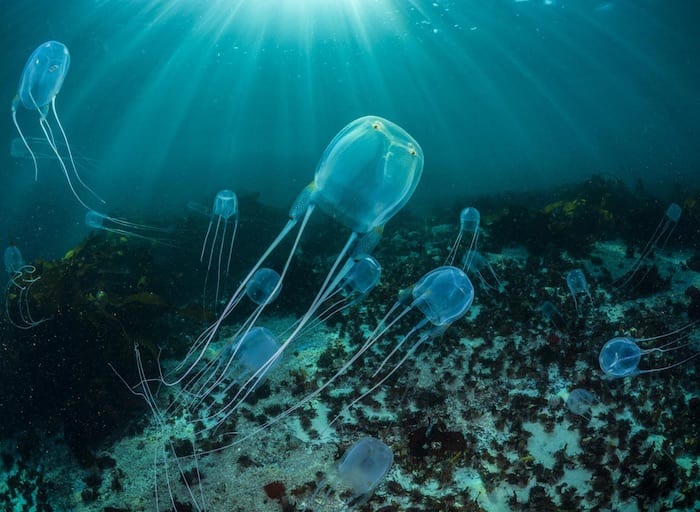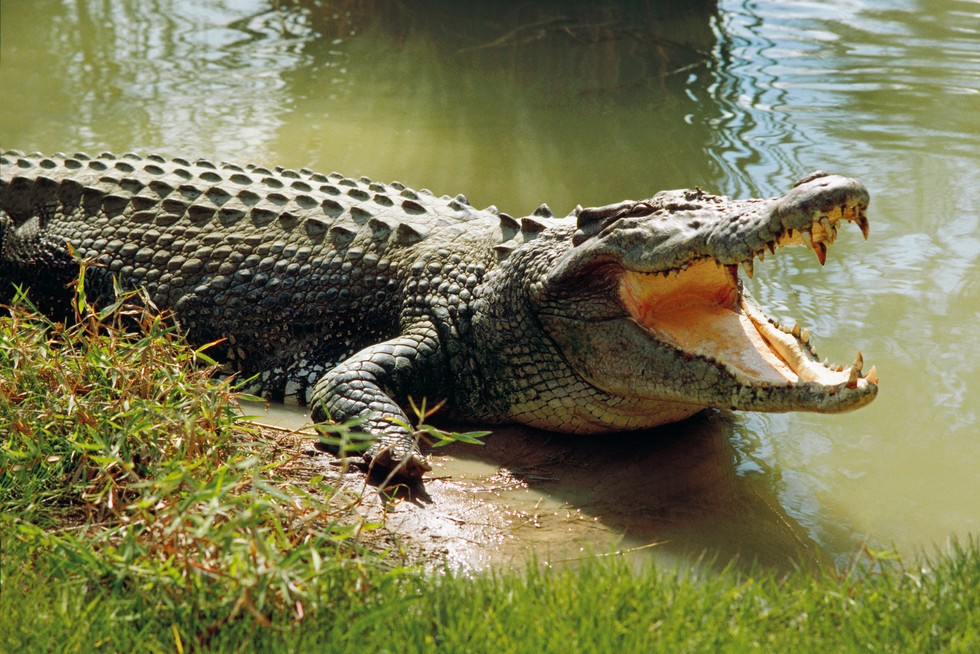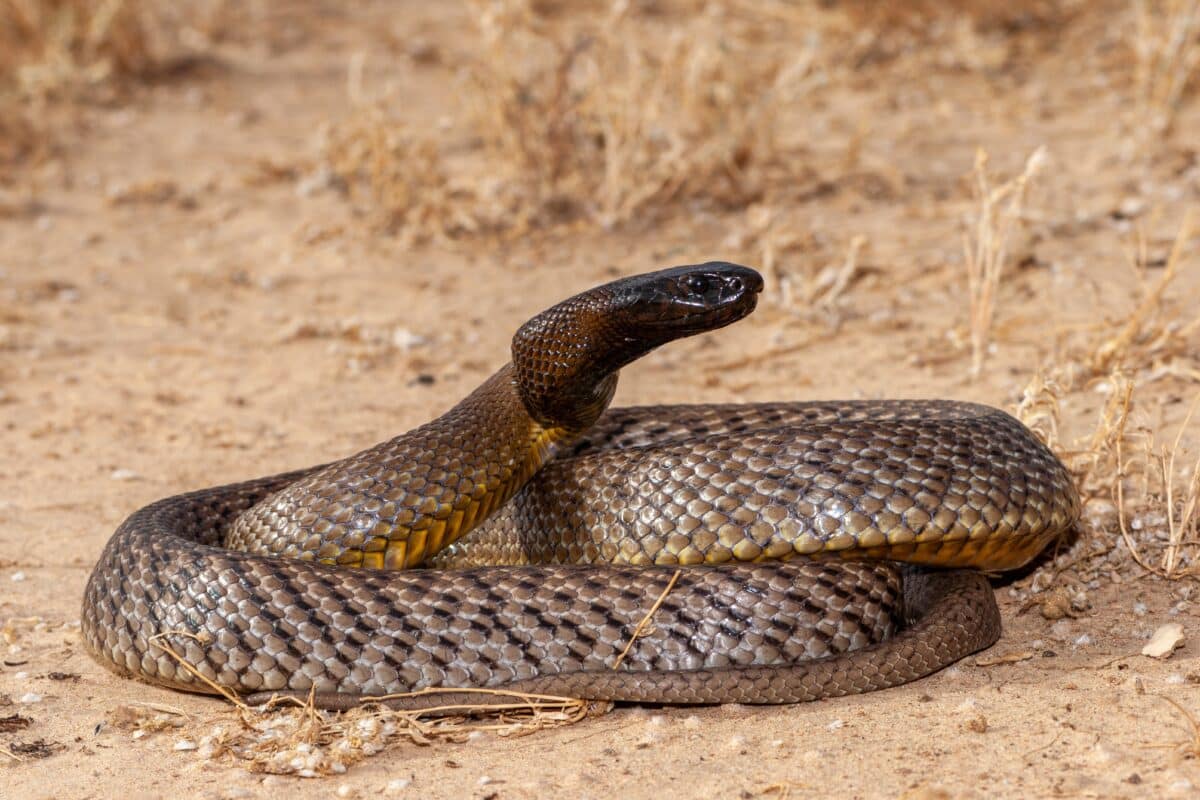Australia is known for its unique and diverse wildlife, but it is also home to some of the world’s deadliest animals. While Australia is generally safe, it is important to be aware of the potential dangers and take precautions to avoid them.
In this article, we will explore the top 5 deadliest animals in Australia. From the aggressive saltwater crocodile to the venomous inland taipan, these animals are not to be underestimated. By learning about these animals and their behavior, you can better protect yourself and appreciate the incredible wildlife that Australia has to offer.
You are reading: The Top 5 Deadliest Animals In Australia

The Top 5 Deadliest Animals In Australia
Saltwater Crocodile

Saltwater crocodiles (Crocodylus porosus) are one of the most aggressive and dangerous crocodiles in the world. They are the largest living reptile, exceeding the Komodo dragon in size.
Saltwater crocodiles are native to saltwater habitats, brackish wetlands, and freshwater rivers from India’s east coast across Southeast Asia and the Sundaic region to northern Australia and Micronesia. They are mostly aquatic animals that spend little time on dry land.
Saltwater crocodiles inhabit coastal rivers and wetlands, the open sea and island shorelines, and extend well inland via major rivers and floodplain billabongs into freshwater rivers, creeks, and swamps. They are considered dangerous to humans and are responsible for several dozen assaults each year.
Saltwater crocodiles are thriving in northern Australia, Western Australia, and Queensland. There are thought to be around 200,000 saltwater crocodiles in Australia, with the most found in the areas surrounding Darwin and the Mary River.
Inland Taipan

The inland taipan (Oxyuranus microlepidotus), also known as the western taipan, small-scaled snake, or fierce snake, is a highly venomous snake that is native to semiarid regions of central east Australia. It is the most venomous snake in the world, with the venom of one bite being strong enough to kill 100 men.
Despite its venomous nature, the inland taipan is rarely encountered in the wild by the average person because of its remoteness and brief above-ground appearance during the day.
Read more : 11 Unique Types Of Blenny Fish
Inland taipans are associated with the deep cracking-clays and cracking-loams of the floodplains, and they shelter in soil cracks and crevices, holes, and mammal burrows. They are solitary, coming together only to mate, and females lay 12-24 eggs in crevices or abandoned burrows.
While they are the most venomous of all snakes, they are not the deadliest snake as they rarely come into contact with humans, and there have been no recorded deaths since the creation of the anti-venom in 1955.
Box Jellyfish
Box jellyfish (Chironex fleckeri) is a species of extremely venomous jellyfish found in coastal waters from northern Australia and New Guinea to Indonesia, Cambodia, Malaysia, and Singapore, the Philippines, and Vietnam. It has been described as “the most lethal jellyfish in the world,” with at least 64 known deaths in Australia from 1884 to 2021.
Box jellyfish are named for their cube-shaped bell and have tentacles covered in biological booby traps known as nematocysts – tiny darts loaded with poison.
Stings from some species, including Chironex fleckeri, Carukia barnesi, Malo kingi, and a few others, are extremely painful and often fatal to humans.
Box jellyfish are found in warm coastal waters around the world, but the lethal varieties are found primarily in the Indo-Pacific region and northern Australia.
Chironex fleckeri is the largest of the box jellyfish, with body sizes reaching up to one foot in diameter and thick, bootlace-like tentacles up to 10 feet long. If stung, emergency services should be called immediately, and CPR should be administered if needed.
Blue-Ringed Octopus
The blue-ringed octopus is a small but deadly creature found in tide pools and coral reefs in the Pacific and Indian oceans, from Japan to Australia. There may be around 10 different species of blue-ringed octopus, though only four have been given scientific names. They can be identified by their yellowish skin and characteristic blue and black rings that change color dramatically when the animal is threatened.
Blue-ringed octopuses spend most of their time hiding in crevices while displaying effective camouflage patterns with their dermal chromatophore cells. They eat small crustaceans, including crabs, hermit crabs, shrimp, and other small sea animals.
These octopuses are famous for having extremely potent venom that can be strong enough to kill a person. The venom is produced by symbiotic bacteria that live in their salivary glands.
Despite being so toxic, blue-ringed octopuses are not aggressive and will only bite humans if they feel threatened. There is currently no known anti-venom to treat a person who has been bitten.
Textile Cone Snail
Read more : Discover 7 Animals That Roam Atop Vermont’s Tallest Mountain
The textile cone snail (Conus textile) is a venomous species of sea snail that belongs to the family Conidae, the cone snails, cone shells, or cones. It is also known as the cloth of gold cone or the killer cone snail.
Textile cone snails live mostly in the Indian Ocean, along the eastern coast of Africa and around Australia. They live in the sand beneath coral and rocks in shallow waters. The marine cone snail has a highly glossy, heavy shell. Like all species within the genus Conus, these snails are predatory and venomous, capable of “stinging” humans. They are capable of injecting venom, so complex that some species can kill a human with one small prick.
Based on a report in 2004, about 30 human deaths have been attributed to cone snails. In 2021, a teen nearly died after picking up a live textile cone. The venom varies from species to species, and most contain as many as 50 different peptides, which are short chains of amino acids.
Cone snails are prized for their brightly colored and patterned shells, which may tempt people to pick them up. This is risky, as the snail often fires its harpoon in self-defense when disturbed.
FAQS
1. What is the deadliest animal in Australia?
The saltwater crocodile is considered the deadliest animal in Australia. It is an aggressive and territorial animal that can grow up to 23 feet (7 meters) long and weigh up to 2,200 pounds (1,000 kg). Its powerful teeth can reach 5 inches (13 cm), and it has the world’s strongest bite. Saltwater crocodiles are responsible for several dozen assaults each year and are known to attack large land mammals.
2. What is the most venomous snake in Australia?
The inland taipan is the most venomous snake in the world, and it is native to semiarid regions of central east Australia. Despite its venomous nature, the inland taipan is rarely encountered in the wild by the average person because of its remoteness and brief above-ground appearance during the day.
3. What is the most deadly jellyfish in Australia?
The box jellyfish is considered the most deadly jellyfish in the world, and it is found in coastal waters from northern Australia and New Guinea to Indonesia, Cambodia, Malaysia, and Singapore, the Philippines, and Vietnam. Its venom is strong enough to kill a person, and there have been at least 64 known deaths in Australia from 1884 to 2021.
4. What is the most venomous octopus in Australia?
The blue-ringed octopus is a small but deadly creature found in tide pools and coral reefs in the Pacific and Indian oceans, from Japan to Australia. It has highly potent venom that can be strong enough to kill a person, and there is currently no known anti-venom to treat a person who has been bitten.
5. What is the most venomous snail in Australia?
The textile cone snail is a venomous species of sea snail that is native to the Indian Ocean, along the eastern coast of Africa and around Australia. It has highly potent venom that can be strong enough to kill a person, and there have been about 30 human deaths attributed to cone snails.
Source: https://petstutorial.com
Category: Animals










